Movies 28
Hollywood anti-Cuban Mafia Action Movie
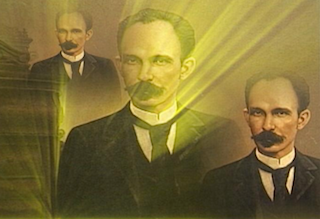 MARTIANOS
MARTIANOS
Followers of the thought of José Martí Network of Cuban emigres.
Hollywood to Film anti-Cuban Mafia Terrorist Action Movie in Miami
By Arthur González
Posted by Virgilio PONCE on April 4, 2018 at 11:07am
Translated and edited by Walter Lippmann for CubaNews.
The truth always finds a way, even if it takes time, and now Hollywood has agreed to bring to the big screen the story of some of the terrorist actions carried out by the anti-Cuban terrorist mafia of Miami, which the Cuban people have denounced so much.
The totality of the denunciations of these terrorist actions against Cuba will have to wait for Hollywood to decide to count them, since many of its perpetrators still live peacefully in the United States, supported by renowned Congressmen such as Ileana Ros-Lehtinen, Mario Díaz-Balart, Bob Menéndez, Marco Rubio, Ted Cruz and others.
The film, based on the recent book entitled The Corporation, attempts to recount the events of 30 years, carried out by Cuban mafia members. All have the status of “political refugees” granted by the US authorities, although in the book they are classified as “real adventures”, avoiding calling them “terrorist acts” in order not to seek conflict with those most responsible for these plans.
This mafia was formed, trained and financed by the CIA to act in Cuba against the Revolution. Many of its members were part of the mercenary Brigade [2056] that invaded the island in 1961. After being released by the Cuban government, they returned to the United States, training for terrorist acts, where the struggle over money and political power brought a war between them.
The Corporation, tells part of the life of a single group of these Cuban “political refugees”, led by José Miguel Battle, mercenary of the Bay of Pigs invasion. He became the boss of illegal gambling and drugs, from Miami to New York, something that still happens in the underworld of these anti-Cubans, many of whom amass powerful fortunes with which they support politicians of Cuban and American origin.
José Miguel Battle, is one of hundreds of henchmen of the dictator Fulgencio Batista, who managed to escape revolutionary justice and found support and safe haven from the U.S. authorities. They refused to comply with the extradition agreement signed with Cuba and in force until 1961, despite the official demand that Cuban authorities made for years.
Murderers, torturers and former members of the dictator Batista’s repressive bodies, such as Battle, make up this mafia half-described in the book. This is because there are others, not mentioned in the book, despite the volume of crime they committed. These include Rafael Díaz-Balart, former interior minister, also a refugee in Miami; Rolando Masferrer, chief assassin of a paramilitary body known as Los Tigres; Colonel Esteban Ventura, murderer of hundreds of young people; Conrado Carratalá Ugalde, former head of the Department of the Batista Police Department; Luis Alberto del Rio Chaviano, Brigadier General of the Batista army; Colonels Orlando Piedra Negueruela, Mariano Faget Díaz and Rafael M. A. Gutiérrez Martínez; Pilar Danilo García y García, Brigadier General, chief of the tyrant’s police force; Lieutenant Colonel Irenaldo Remigio García Báez, former head of Batista’s Military Intelligence Service.
Nor does the text tell of Operation Condor, carried out by the CIA in Latin America. In it, many of these Cuban mafiosi took charge of murdering and torturing thousands of young people. Others include the terrorist acts suffered by the Cuban people at the hands of CIA agents, such as Carlos Alberto Montaner, who was arrested and punished for placing an incendiary flask in a shopping mall in Havana, escaped from prison and is now a refugee in Havana.
Likewise, they omit to mention the multiple murderer Luis Posada Carriles, a “political refugee” in Miami despite being the confessed author of the bombing of a Cuban civilian plane in mid-flight, where 73 innocent people died.
The terrorist acts planned and carried out by dozens of counterrevolutionary organizations financed by the CIA, such as the Comandos L, Alpha 66 and Omega 7, would need a series with many seasons for the world to know the truth about why Cuba has been denouncing them for 60 years.
Thousands were killed and assassinated by these mafiosi, including Cuban diplomats, the detonation of bombs in Cuban embassies, consulates and commercial offices abroad, dynamited ships, the introduction of pathogenic germs to sicken people, animals and the flora of the island, and many more crimes.
The Corporation is a tiny part of the history of this anti-Cuban mafia, all with the status of “political refugees”, thanks to the subversive manipulation of U.S. immigration policy against Cuba, due to, in the first place, the Cuban Adjustment Act.
The accounts of daylight shootings in the streets of Little Havana and the successful blows celebrated with parties where they gave away bags of cocaine. These are almost child’s play compared to the murky actions of that mafia, such as placing a bomb beneath the seat of former Chilean Foreign Minister Orlando Letelier in Washington, DC, where he, his wife and the driver were blown to pieces.
Its authors, including Guillermo Novo Sampol, live peacefully in Miami as “political refugees”, thanks to the efforts of Representative Ileana Ros-Lehtinen.
The book, although it does not cover all the terrorist actions, is a sample of those who are those murderers whom the United States welcomed as “refugees”, hiding the truth from its citizens who, with part of their taxes, have kept that rascal that forms part of the evil called “Cuban exile”.
That’s why we remember José Martí when he said:
“He smiles at the appearance of truth.”
Arthur González, Cuban, specialist in Cuba-U.S. relations, editor of the El Heraldo Cubano blog.
Argentine Cinema Mourns Federico Luppi
Argentine Cinema Mourns Federico Luppi
Translated and Edited by Walter Lippmann.
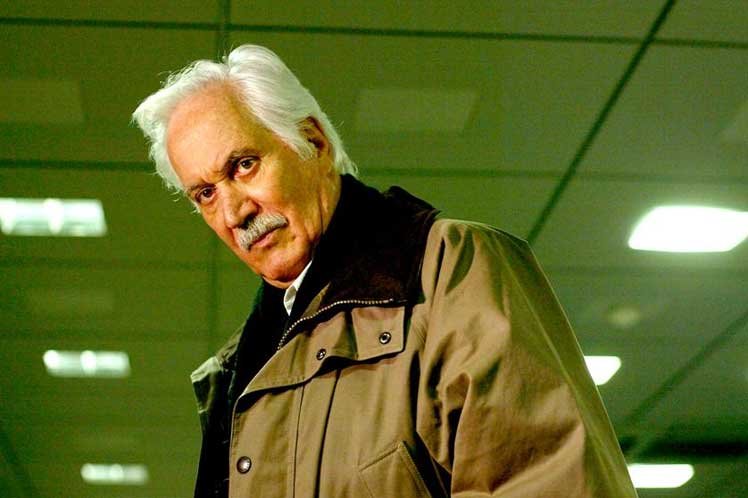
Buenos Aires, Oct 20 (Prensa Latina) He was 81 years old but for those who knew him up close, he had a young, cheerful heart and an enviable capacity for work, today the Argentineans say goodbye to one of their greatest actors, the great Federico Luppi .
Although he had been hospitalized several days ago due to a health problem that had been dragging on since his head was hit last April, the news has had an impact on the cultural media of the country and especially those Argentines who lived and dreamed of their actions.
Luppi, Time of Revenge, Labyrinth of the Faun, Common Places, Martin Hache, Cronos and many other films, died this morning at the Favaloro Foundation, where he remained hospitalized waiting for a transfer to another clinic to start a rehabilitation process.
The blow to his head produced a cerebral clot while he worked. In just six months his life went out but not the indelible mark left in Latin American and international cinema in more than 70 films, many of them multi-award winning. ‘Never’, he said sharply when one or another journalist asked him if he planned to retire one day and he kept his word, because despite his health complications, he was about to start a theatrical tour with the piece Las ultunas lunas, a play about old age, directed by his wife Susana Hornos.
On Twitter, messages weep over Luppi. He died a big figure, perhaps the most repeated word to say farewell to this actor, considered one of the most versatile interpreters of his generation.
Some pay homage with photographs and eternal thanks, others publish some of the most memorable scenes of their performances to recall it.
‘I am happy to be alive at this age, to have done so many things in Argentina and still be able to recount them. And I would like, yes, in slightly fantastical terms, to descend slowly through the dark side of the moon, but with dignity,” said this cinematic icon, who left for eternity today.
rc / may
Mario Conde’s Havana Noir
PAGINA 12 (Argentina)
Mario Conde’s Havana Noir
The investigations of Leonardo Padura’s detective are in audiovisual form now. Jorge Perugorria plays the detective who investigates a series of crimes in a colorful and decadent Cuba
The script of the series is based on four novels by the Cuban author.
FOUR SEASONS IN HAVANA, by NETFLIX
By Federico Lisical
A CubaNews translation.
Edited by Walter Lippmann.
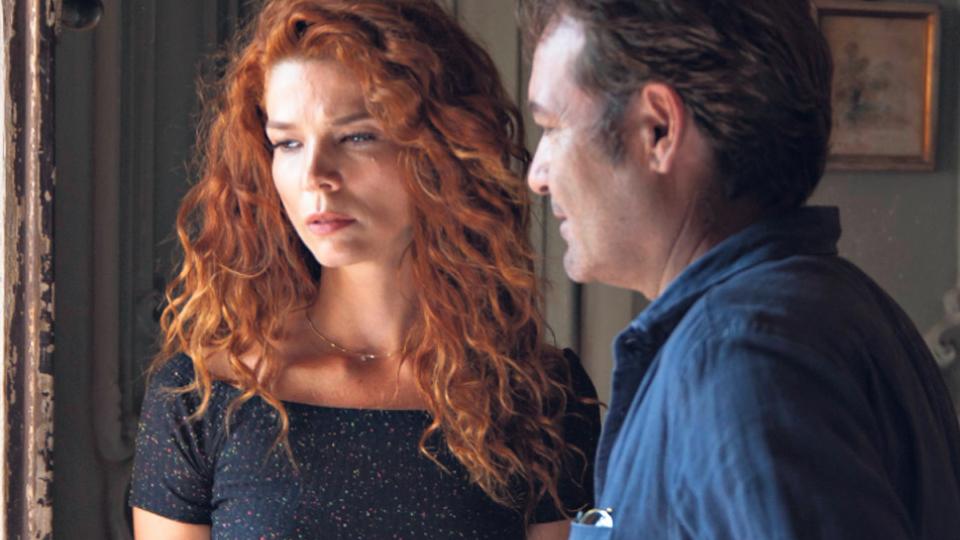
Los argumentos de la serie están basados en cuatro de las novelas del autor cubano.
“I decided to make a character who was in conflict with the reality he was living,” Leonardo Padura once told this newspaper. The Cuban writer was referring to Mario Conde, the officer who was the main character ofj his police novels and who now centers the NETFLIX miniseries Four Seasons in Havana (that since last Friday can be seen online). The series is based on stories in Padura´s four novels: Past Perfect, Winds of Lent, Masks, and Autumn Landscape.
This disenchanted but noble man, who does not seem to be a police lieutenant and has a great love for books, is interpreted by Jorge Perugorría. Almost to his regret, the best thing he knows how to do is solve mysteries and write up his wanderings with a typewriter. “There is no one better than Mario Conde to get into Havana, rummage through its darkness, and draw some light. That special insight the detective has, is particularly revealing. What I wanted to do was to make a kind of chronicle, a testimony of what recent Cuban life has been like. In each of his investigations, he reveals a sector of Cuban society, but also the humanity of a number of characters who live that reality day-to-day,” said the writer in another interview.
In total there are four episodes, ninety minutes each. They were directed by the Spaniard Felix Bizcarte, and the role of Padura himself in the adaptation was key, as well as that of his wife Lucia López Coll. Their intention was to preserve the tone of the novels and let the Cuban reality filter in naturally. What is the resulting Havana? One that shows its darkest and most sinful side. There is corruption, traffickers of all kinds –of drugs and influence– has been but there is also the dream of what the revolution could have been. Conde is a romantic who goes around throwing phrases for whoever wants to listen: “Havana has fallen so much that is has gone to shit”; “Cops investigating cops… What the hell is going on?”
The context is crucial as the books were published between 1991 and 1998 and reflected what was happening on the island after the end of the Cold War, the tightening of the embargo, and the regime’s opposite sides. As the author said, “… I learned from Hammett, Chandler, Vázquez Montalbán and Sciascia that a police novel can have a real relationship with the country’s environment; that it can denounce or touch concrete facts and not just imaginary realities.” “El Conde” moves about the capital of Cuba as a Philip Marlowe who suffers the heat, and fights his destiny, “doing what I have to do, but never what I really want to do.” The big difference with the iconic detective of suburban Los Angeles is that Conde is a cop. “It was totally unrealistic to have someone who was not a police officer investigate a crime in Cuba, especially if it was a murder,” Padura explained. But Conde also dreams of being a writer and that is what saves him.
This jaded subject is summoned to investigate the murder of a high school teacher while he is also looking into another case that has to do with his own past. In all of these there are several criminal associations. As in every noir police story, in addition to the investigations there are institutions tainted with indolence, elites complicit with business interests, femmes fatale, jazz music and seedy bars. Its main character is a researcher of the shadows but with a complex humanity and far from clichés. “Conde represents a generation of Cubans who believed in a country project that will never be, and feeds heavily on nostalgia. He’s a fucking nostalgic, as he defines himself, “said the actor who has the role.
The photography (by Spaniard Pedro J. Márquez) is one of the highest points of the production. The tone is twilight and oblivious to any “for export” intention. The rundown houses of the old quarters convey the stupor of the characters; and the danger in a harbor city when the sun goes down. The scenes of violence are given in unusual settings that can capture the audiences. In short, there are four genre stories within a very unique context that reflects the day-to-day life of the Caribbean city and its surroundings. One can easily perceive how the characters are linked: their body language, how they breathe and perspire, their unrefined speech that mispronounces sounds, how their food smells, and how they have sex. Four Seasons in Havana is, above all, a sensory experience. “Noir was never so colorful,” said one of the promotions for the miniseries; but it may be exactly the other way around.
The Handmaid’s Tale

“The Handmaid’s Tale”: The controversy, fiction and a constant provocation
by Yunier Javier Sifonte Díaz
June 17, 2017
Translated and edited by Walter Lippmann for CubaNews.
 The Handmaid’s Tale is perhaps one of the most disturbing TV series of recent times. Provocative in extreme, incisive in its questionings and with a crudity without limits, this production investigates in sensitive areas of the human species and speaks without fear about oppression and the loss of freedom. Fear, corporal punishment and rape, which has become a ritual, coexist with an extraordinary screenplay and attract the applause of the specialized critics, but also the attention of those who wonder where reality ends and fiction begins.
The Handmaid’s Tale is perhaps one of the most disturbing TV series of recent times. Provocative in extreme, incisive in its questionings and with a crudity without limits, this production investigates in sensitive areas of the human species and speaks without fear about oppression and the loss of freedom. Fear, corporal punishment and rape, which has become a ritual, coexist with an extraordinary screenplay and attract the applause of the specialized critics, but also the attention of those who wonder where reality ends and fiction begins.
Based on the novel of the Canadian writer Margaret Atwood’s novel of the same name, the series looks to the near future where environmental pollution has left most women in the United States sterile. Faced with the situation, a radical group seizes power, assassinates the President, annuls the Constitution and implements the Republic of Gilead. In the new society, profoundly fundamentalist and puritanical, most modern values disappear, women lose all their rights and those who can still breed offspring only matter as an object destined to give children to the wealthiest families.
From here, females can only aspire to few roles: a few are the infertile wives of the nation’s leaders, but the rest fulfill functions as maids destined for the repopulation of the country, domestic employees or prisoners sentenced to die while cleaning the areas damaged by the radiation. However, none has the right to read, think or express her views, because, even with the ancestry of ladies or sexual slaves make up that lower group causing the misfortunes of the nation. Among them lives the servant Offred, whose name hardly represents another sign of submission. If she belongs to Commander Fred then she should be named like him.
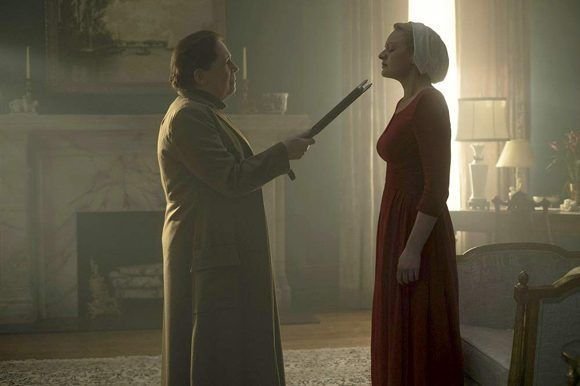
Corporal threats are recurrent when maids forget their basic rules of behaviour. Photo: Hulu.
This is one of the great successes of the series: the narrative from all possible spaces, with a deep symbolism and a precise structuring of dialogues. From the immutable red dress of the maidservants – joyful to fecundity, but also to blood and pain – through their pre-established attitudes, gestures and conversations, to the cap to restrict their vision of a world they no longer know, everything works to annul their individuality and turn them into standardized subjects.
With different levels of reading and interpretation, for some, The Handmaid’s Tale means a defense of feminism, while for others it represents a good way to reflect on systems of government such as that implemented by the Islamic State or against the rise of neo-fascist or extreme right-wing tendencies in some countries of the planet. At the thematic level, the series does not address current issues such as women’s reification, harassment of homosexuals, ablation [female genital mutilation] or ethical discussions about abortion.
Supported by a millimeter of perfection and an extraordinary passion for detail, director Reed Morano uses whatever element she believes necessary to retrace the path of this deeply misogynistic and inhuman society, to show the harshness of the moment and the anguish of some female characters almost always on the brink of the abyss. Both the careful photography of bluish or ochre tones, as well as the commitment to intimacy in scenes, the punctual use of the soundtrack and the optimal use of some very first shots of Offred’s face -performed masterfully by Elisabeth Moss-, contribute to closing spaces and placing the spectator right in the centre of this asphyxiating drama.
To this end, this maid has two voices, one submissive and fearful and the other known only to the spectator: rebellious, sarcastic, always pungent in the face of the regime’s exaggerations. Narrated by the protagonist from recurrent flashbacks and internal dialogues, the decomposition of society and its silent conversion in the Republic of Gilead appears on screen. “Now I’m awake and I see the world. I was asleep before. That’s how we let it happen. When they massacred Congress, we didn’t wake up. When they blamed the terrorists and annulled the Constitution, we did not wake up either. They said it would be temporary, but nothing changes at all,” recalls Offred to explain how the country arrived in the current state of affairs.
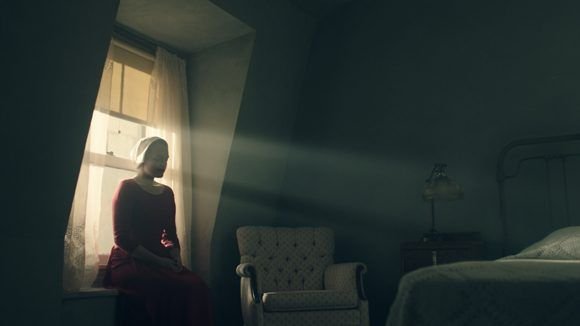
The sobriety of the scenes and the correct use of light give this production a special touch and nuance. Photo: Hulu.
However, these reflections articulate a discourse more anchored to reality and raise questions that are essential for the debate of these times. Does conquering certain universal values such as freedom, democracy and human dignity mean giving up fighting for them? What subsists beneath xenophobia, intolerance, extreme individualism and attempts to construct apolitical or banal subjects?
“Blessed are the meek,” they constantly remind the maids in the centers in charge of training them for their new function, as if eliminating any kind of active posture and making conformism a virtue were an essential objective to achieve domination. And in fact, it is, because the oppression that exists here is not only physical, but also psychological, intellectual and cultural, the only way to dismember a society as a whole.
With seven of the ten chapters of the first season already released and the guarantee of at least one second, The Handmaid’s Tale transcends its exceptional technical skills and its fine adaptation of a classic Canadian literature, but also because it uninhibitedly discusses universal themes such as ideology, morality, humanism, politics and totalitarian and extremist systems. Even without claiming to be a prophetic or apocalyptic work, it has the merit of evading complacent positions and touching sharp areas of a model who likes to see itself as perfect. Responding to the provocations of this series with intelligence and analysis, confronting it without complexes and willing to its art, but also to the debate and questioning, would be good ways to live this story only as fiction.
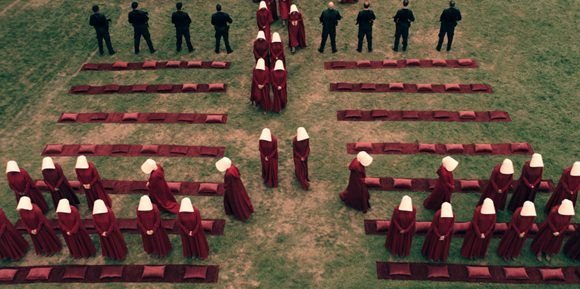
In this society there is no room for individual initiatives and any activity implies the fulfillment of a ritual. Photo: Hulu.
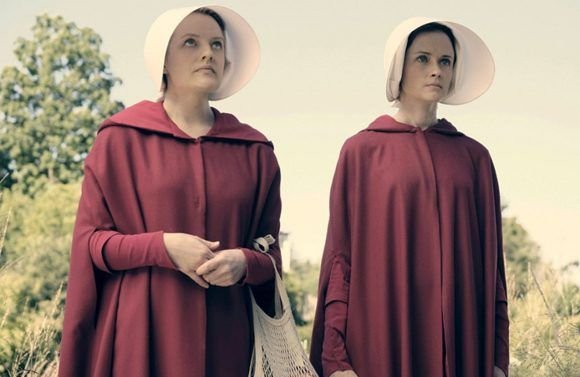
All the elements surrounding these maids function as symbols of their submission. The regular red dress, the cap, the obligation to go out in pairs to watch each other, are good examples. Photo: Hulu.
The South American Ogre So Loved By His People
The South American Ogre So Loved By His People
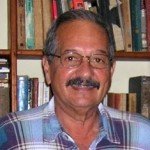
By Manuel E. Yepe
September 2009
A CubaNews translation.
Edited by Walter Lippmann.
Who is this monster, the United States’ worst enemy in South America, who is worse than Fidel Castro and Osama bin Laden? The who supports all terrorists and drug traffickers in the world, from Al Qaeda to Hamas, who promotes hate against the wealthy, and who can also count on enough popular support to win all the elections?
With questions such as these begins the documentary “South of the Border” by the prominent American filmmaker Oliver Stone. The film is about the leader of the Bolivarian Revolution, Hugo Chávez, to be presented on Sunday September 6, to the press at the Venice Film Festival. According to reports, the film includes testimony about the personality and career of the charismatic Venezuelan leader by Latin American presidents, Cristina Fernandez of Argentina, Evo Morales of Bolivia, Luiz Ignacio Lula da Silva of Brazil, Rafael Correa of Ecuador, Fernando Lugo of Paraguay, and Raúl Castro of Cuba.
The announcement of the completion of this film project coincided with the failure of a campaign funded by the Colombian oligarchy, supported by groups of the wealthy Venezuelan opposition, and the U.S. It was orchestrated under the slogan “No more Chavez.” The campaign sought to organize simultaneous marches on 4 September 2009 in ninety cities worldwide, “to protest the insults against Colombia which were made by the Venezuelan leader.”
According to press reports, the event was convened, by “a group of young Colombian entrepreneurs” who had predicted the event would be attended by great numbers of people, in major cities worldwide however, it only managed to attract small crowds using social networking sites like Facebook and Twitter on the Internet.
The movement, considered, by Venezuelan-American lawyer, writer and journalist Eva Golinger, to be “a call for assassination, hatred and destabilization” failed when it only brought together groups of a few hundred people in a number of cities – much smaller numbers than the projected. “They failed and were made to appear ridiculous with the demonstrations they called against Chavez for Friday and Saturday,” said the president of the Venezuelan National Assembly, Cilia Flores.
Organizers affirmed, without giving specific numbers, that they were successful in carrying out rallies in Madrid, Barcelona, Paris, Sydney, Brussels, Hamburg, Buenos Aires, Sao Paulo, Santiago, Tegucigalpa, several cities in Venezuela, as well as thirty locations in Colombia.
The most popular of these was, without a doubt, the rally that was “called” in Tegucigalpa, by the military government that took power by military coup on July 1 and which, removed the constitutional President of Honduras Manuel Zelaya. The insurgents reported that about two thousand people participated in an event led by Roberto Micheletti, the de facto head of state.
In Bogota, several groups marched from the northern suburbs of the city, areas that have high concentrations of the upper class, to the historic center. In the downtown area of Bogotá, and in other areas, the anti-Venezuela protests were rejected by grassroots groups with whom they exchanged shouts and at times, even blows.
Popular Protesters came out against President Álvaro Uribe’s proposal to make changes in current law in order to run for re-election again, and also, in opposition to Uribe’s military pact with the U.S. government. Which, according to the official version, has as its aim to put Colombian military facilities at the service of U.S. operations against drug trafficking in the region. For all the other South American leaders – primarily Chavez, this action represents the surrender of Columbia to U.S. military occupation and poses a threat to the independence of Latin America nations.
In Caracas, popular and opposition groups gathered at a safe distance from each other in order to avoid confrontation, and to express, respectively, rejection and support for President Hugo Chávez and the Bolivarian revolution. The demonstrations were preceded by appeals to keep the marches peaceful.
In the demonstration against Chavez, where a few hundred opponents chanted “No more Chavez,” the counterrevolutionary slogan launched from Bogota, the metropolitan mayor Antonio Ledezma, of the opposition, demanded freedom of expression in an act that, paradoxically, was being protected by authorities and broadcast by several radio stations and local television stations. There was also criticism of a law passed by parliament that expands educational options to low-income sectors.
On the side of Chavez supporters, thousands of citizens dressed in red, the color of the United Socialist Party of Venezuela (PSUV), and marched in support of the Bolivarian leader, while at the same time other hundreds of marches in support of Chavez were taking place in inland towns. Diosdado Cabello, a leader of PSUV reported in Caracas that the Venezuelan opposition maintains its plan of assassination because of the inability to defeat Chavez at the polls in democratic processes.
By telephone, from Tehran, Iran, where he was on an official visit, Hugo Chávez, the evil defender of the humble, the enemy of the rich and of American hegemony on the continent, ratified the Venezuelan peoples commitment demonstrated in their mass rally against the foreign ministry in Caracas, by stating, “homeland, freedom and socialism.”
The paparazzi and their share of the blame

The paparazzi and their share of the blame
By Rolando Perez Betancourt
2009
A CubaNews translation.
Edited by Walter Lippmann.
For several days now, the international press that covers show business and their scandals was making a lot of fuss over millionaire Paris Hilton going to Europe to “meet” soccer star Cristiano Ronaldo, best man in the courts today.
 FARRAH FAWCETT
FARRAH FAWCETT
Would they begin an affair? Can the Portuguese escape the seduction of this romance collector? These were some of the expectations around the young star, who was recently acquired by the Real Madrid at an unpronounceable price, and the so called blond of gold. Her merits list is larger, more because she comes from a rich family and for the scandals she never stops creating, than for her performances as actress, model and singer.
Everything seems to indicate that the boy saw her for some minutes, smiled courteously and continued on his way to training. The tall queen of the media, slighted, declared that he had looked “somewhat feminine.”
Soon after, Cristiano Ronaldo was again in the spotlight, not because he is a sports star, but for kicking the car of a paparazzo that was following him on the streets of Lisbon. The soccer star explained in a press release that up to that moment, he had put up with weeks of harassment by sheer self control. But, the image hunter had not taken into consideration that his victim was traveling with his mother. And, one doesn’t disrespect someone’s mother! Therefore, if such a situation repeated itself, he would probably react in the same way.
The almost coincidental deaths of Michael Jackson and actress Farrah Fawcett have put the topic of the paparazzi again on the table. And in passing, the fatal accident of princess Diana of Wales while escaping from a group of them in Paris is also remembered.
Jackson was constantly harassed in his intimacy and Farah Fawcett, who was a cancer victim, left a bitter testimony, days before her demise, accusing the press and the paparazzi of being decisive in the deterioration of her health. They took photographs of her in a wheelchair showing her fragile and haggard. “I asked them to please leave me to fight my illness alone, but they never heard me, they harassed me, they wanted to be beside me every step till the end and it is already known that cancer feeds on stress.”
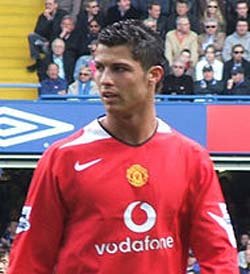 CHRISTIANO RONALDO
CHRISTIANO RONALDO
Technological development –digital cameras and Internet for quick transmission—have made paparazzi proliferate and the competition is ferocious. Some of them are employed and some are independent. And, sometimes they are the ones who pay the so called “stars brokers”, who detect what public figures are doing and locate them. Then the paparazzi speed off by motorcycle, car or airplane to wherever they are. Their objectives are very specific following a unique and unalterable concept: all embarrassing situations are profitable! It doesn’t matter if they are infidelities, evident or imagined, accidents, carelessness of a physical nature (poor Britney Spears and others), being nude in the high seas or in restricted areas, and, most of all, sexual scenes.
In extreme situations, when the intrusion is of such proportion that it defies human understanding, almost all reproaches are usually made to the paparazzi and people forget that –although guilty– they are part of a mechanism that starts higher up. It begins where the owners of big businesses, generally printed media competing with each other, print just about anything “weird” about show business stars.
These are stars that they frequently help manufacture and then go after them and destroy them. All this on behalf of a reader –equally manufactured–that, without realizing he is being manipulated, pays to see what lies behind the curtains of the famous.
And of from there, the paparazzi take their share (of the blame).
Moviemaking not spared by economic crisis

Moviemaking not spared by economic crisis
By José Luis Estrada Betancourt
E-mail: joselestrada@jrebelde.cip.cu
May 26, 2009 – 00:45:44 GMT
A CubaNews translation.
Edited by Walter Lippmann.
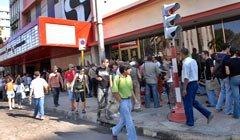 Even Hollywood shoots with caution given the undeniable problems to get loans, the fear of recession and the little confidence in Wall Street.
Even Hollywood shoots with caution given the undeniable problems to get loans, the fear of recession and the little confidence in Wall Street.
Such a highly topical matter as the world economic and financial crisis, whose effects we feel in life’s every sphere, has not gone unnoticed by the seekers of ideas for possible plots that might become box-office hits. In fact, the sexagenarian Michael Douglas will once again be directed by the renowned Oliver Stone to deliver a sequel to Wall Street (1987), where he made an Oscar-winning portrayal of Gordon Gekko, a powerful, roguish tycoon who became filthily rich as a stock market speculator.
Wall Street 2 unfolds against the ideal backdrop of today’s disturbing crisis, which will provide the context to throw light on the same world of greed and corruption behind the upcoming The international, starring Clive Owen (as Louis Salinger) and Naomi Watts (as Eleanor Whitman).
Based on screenwriter Eric Warren Singer’s script, the film follows an Interpol agent and an assistant district attorney determined to disclose the shady deals of a very powerful bank turned expert on illegal activities to fund terrorism and war.
Director Tom Tykwer speaks:”If the story seems to be ripped from the headlines, it’s because the headlines have shown that the banks control all aspects of our lives. The mess we’re in now started when the banks took advantage of people and encouraged them to live beyond their means ‘.
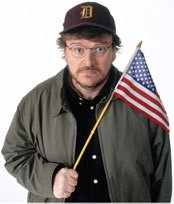 A similar concern has led the controversial and always unerring director of Farenheit 9/11 and Sicko to revisit a subject he had already brought to the fore in 1989 with Roger and Me, when he dug for the reasons why General Motors closed several auto plants in Michigan. A decade later, Michael Moore strikes again, but unlike his fellow filmmakers, with a documentary film, his favorite genre.
A similar concern has led the controversial and always unerring director of Farenheit 9/11 and Sicko to revisit a subject he had already brought to the fore in 1989 with Roger and Me, when he dug for the reasons why General Motors closed several auto plants in Michigan. A decade later, Michael Moore strikes again, but unlike his fellow filmmakers, with a documentary film, his favorite genre.
As usual, Moore decided to make inquiries into the root cause of the economic chaos lashing against our planet. To that end, he used his webpage to urge a few brave people who work on Wall Street or in the financial industry to come forward and share with me what they know», and adding: «Be a hero and help me expose the biggest swindle in American history”.
To the author of Oscar-winning Bowling for Columbine (2003) it is plain that “the wealthy, at some point, decided they didn’t have enough wealth. They wanted more… a lot more. So they systematically set about to fleece the American people out of their hard-earned money. Now, why would they do this? That’s what I seek to discover in this movie”, he explains.
As we wait for the famous filmmaker to delve into this issue, the economic and financial crisis keeps lashing at the entertainment industry, and of course, cinema is not an exception.
No getting out of this one
A most noticeable effect of this crisis, at least to those who are all gung-ho on whatever celebrity walks down the red carpet, is the lack of glamour in the world’s greatest movie festivals, an extravaganza the average mortal won’t give two hoots about but certainly a sign of how drastic the limitations have got to be, even in Cannes, one of the industry’s two biggest markets. Credit lines have decreased so much worldwide that smaller industries are no longer able to attract a sizeable audience –as it happens to Cuba and most independent film companies– to these contests, also affected by a reduction in the number of sales contract signed for the movies, TV, DVD and their by-products. Since the to-ing and fro-ing of 35-mm film has become so expensive, from now on it will be harder for filmmakers and actors to attend the premieres of their motion pictures, and more DVD releases are likely to hit the stalls.
Things have reached the point that corporate Hollywood, with plenty of stakes in various companies, have turned more conservative and are even having second thoughts about paying the hair-raising salaries their stars pocket –like the 20 million dollars Jim Carrey made for The Cable Guy, in the end a real turnoff– or keeping the affluent lifestyle they demand while on set, say, private jets close at hand.
Now the studios are “walking a tightrope”, what with the undeniable difficulties to get credits, the fear of recession, and the little confidence they have in Wall Street, which explains why more than a few finished movies ended up on ice until the thunderclouds get away –including eagerly awaited titles like the latest Harry Potter installment– often because of a budget too low to cover the hundreds of millions of dollars needed for marketing and advertising campaigns alone.
A trump card?
The DVD divisions seem to be the only ones expected to “gain” something from this mess, because people choose to watch films at home rather than pay for a theater ticket –as an average, 3.50 dollars in Mexico, and over 4.50 in Brazil and Chile. Facts: audience ratings fell 10% in Asia, 14% in the United States, and 1% in the European Union (figures for the end of 2008 have it that more than 9 million people stopped going to the movies compared with the previous year, which meant the closure of 39 theaters).
Nonetheless, filmmakers such as the Argentinean Luis Puenzo (The Official Story, Old Gringo) believe the economic crisis “may blaze a trail that the less powerful countries can use to disseminate their motion pictures more. Despite the hard times worldwide cinema is going through, shaking the system a little bit always leaves gaps through which we can slip, used as we are to dealing with lower costs of production than the big Hollywood companies. My generation was born in mid-crisis and is trained to make films regardless of the financial ups and downs”.
Life has proved Puenzo right up to a point, but the crux of the matter remains that the «peripheral» industries can truly make movies, taking into account that the studios have been compelled to make budget cuts and put off some productions for next year, as they have less money for distribution.
For instance, that’s the case of the Cuban Film Institute (ICAIC), which was forced to postpone the shooting of feature films that were almost ready to begin after two years of a steady pace that gave us movies like Los dioses rotos, El cuerno de la abundancia, Omertá, Ciudad en rojo and La anunciación.
Some documentary and full-length films are almost ready to hit the big screen, namely Esteban Insausti’s Larga distancia; El ojo del canario, Fernando Pérez’s movie about our Apostle José Martí; Juan Carlos Cremata’s El premio flaco; and Daniel Díaz’s Lisanka. Yet, we’ll have to slow down.
For the time being, the moviegoers’ greatest hope is that only those films supported by good scripts will get the go-ahead and the budget they need, at least while the crisis still goes on.
Movie Filmed in Cuba Nominated for Oscar
Movie Filmed in Cuba Nominated for Oscar
The film had its world premiere at the Telluride Film Festival, where it was a great success
Author: Cubasi | internet@granma.cu
December 21, 2015 11:12:23
A CubaNews translation. Edited by Walter Lippmann.
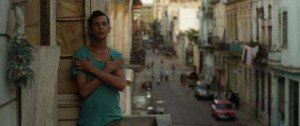
Hector Medina stars in the film
Film “Viva”, set in Cuba and directed by Paddy Breathnatch, was chosen by the Irish Academy of Film and Television to represent the country at the Oscar Academy Awards as best foreign language film.
In this regard, Aine Moriarty, President of the Irish Academy, said: “The Irish Academy is delighted that this wonderful film by Paddy Breathnach and Mark O’Halloran represents Ireland at the Oscars. It reflects the creativity and diversity of points of view of this Irish team while shooting a Cuban story that is so tender, intriguing and visually captivating.”
The film had its world premiere at the Telluride Film Festival, where it was a success. In October, it will be presented at the Busan Festival.
Written by Mark O’Halloran, the drama follows Jesus, an 18 year old Cuban who is lost and trying to find his true identity. Unsure of himself or his future direction, he works at a drag queen club in Havana. There he pursues his dreams of becoming an actor, while earning money through prostitution.
He finds his oasis at home listening to the albums his mother and grandmother left him; or even watching the boxers who train next door. Then, something comes to his life that will challenge his direction and his freedom: his missing father, a famous boxer, who returns after spending 15 years in prison for killing a person in a street fight when Jesus was a child.
The cast includes Hector Medina, Jorge Perugorría and Luis Alberto Garcia.
Subscribe to Blog via Email
| M | T | W | T | F | S | S |
|---|---|---|---|---|---|---|
| 1 | 2 | 3 | 4 | 5 | 6 | 7 |
| 8 | 9 | 10 | 11 | 12 | 13 | 14 |
| 15 | 16 | 17 | 18 | 19 | 20 | 21 |
| 22 | 23 | 24 | 25 | 26 | 27 | 28 |
| 29 | 30 | 31 | ||||



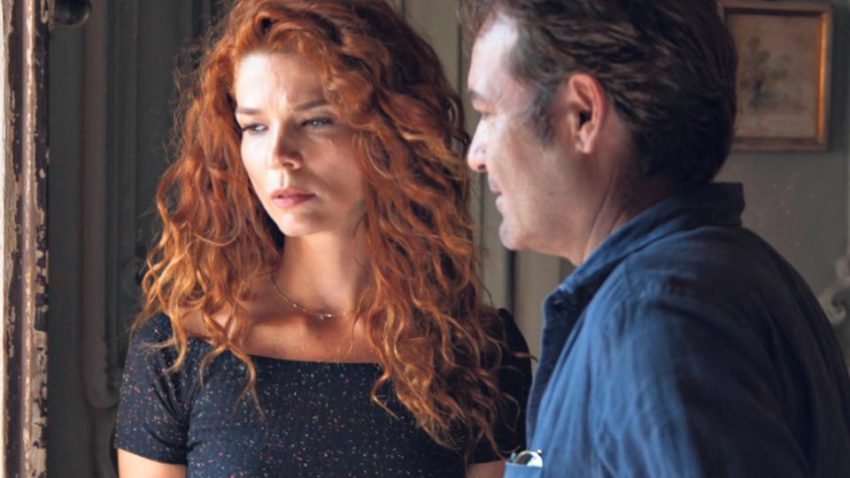
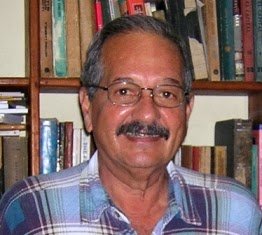
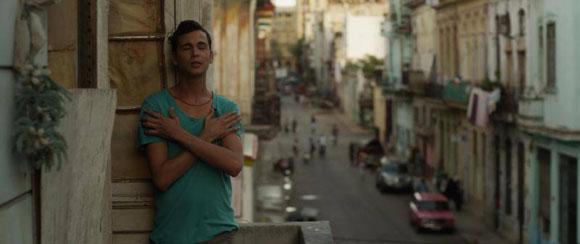

You must be logged in to post a comment.